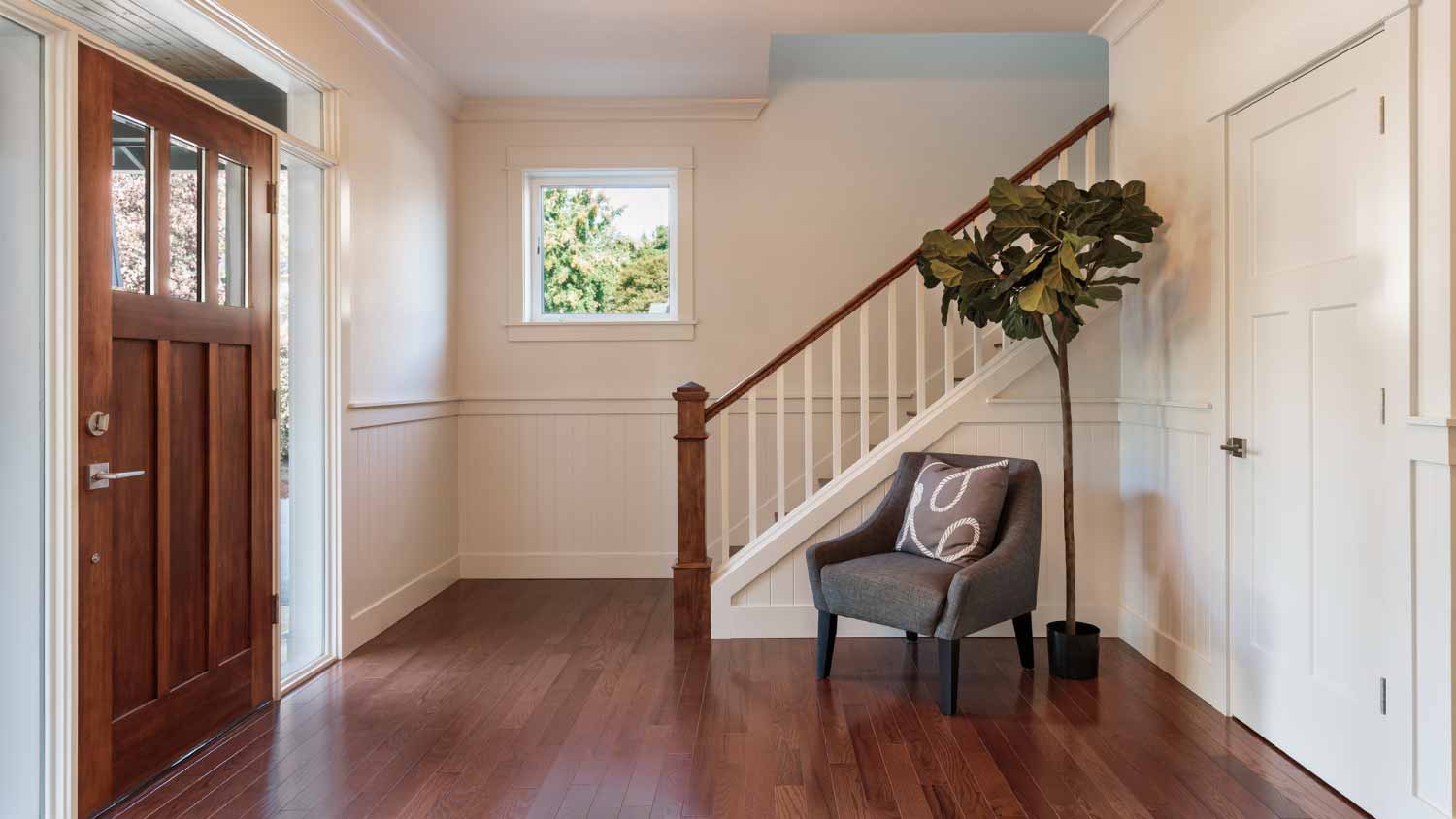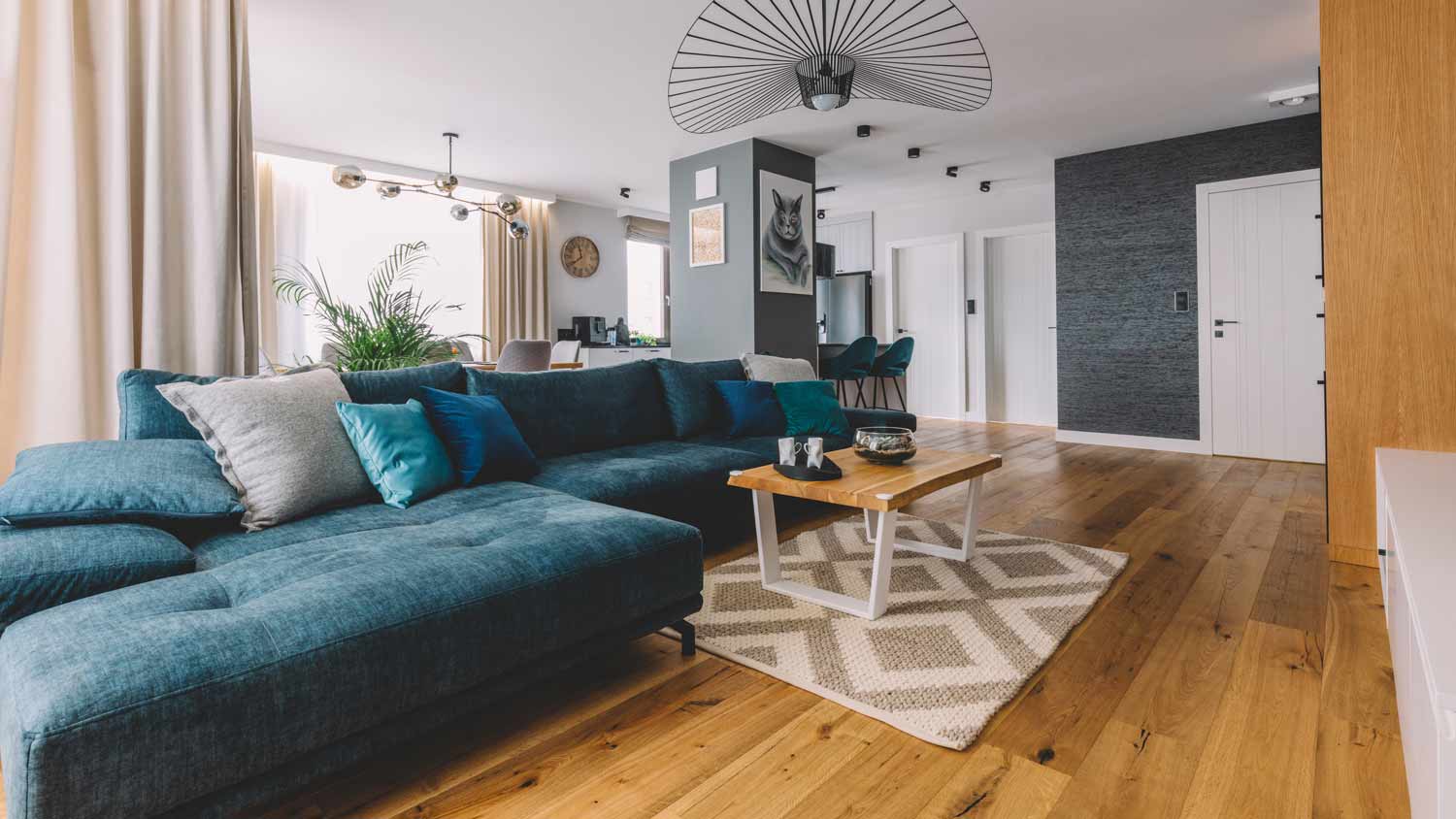What You Need to Know Before Choosing Leather Flooring for Your Home
It might be the perfect flooring you’ve never heard about


Leather sofas, pillows, chairs and throws are mainstays in home decor. And, in the last 20 years or so, leather flooring emerged as an eco-friendly option to tile, carpet, wood or laminate floors. Yet this elegant and sustainable flooring has its pros and cons; here’s what to consider before buying.
What to Consider Before Buying Leather Flooring
When considering leather flooring, evaluate your existing floors. Leather flooring comes in planks or tiles in different sizes and several finishes. Leather floor tiles provide the same design options you get with ceramic or stone flooring. Longer planks give leather flooring an expansive, luxurious look.
Leather flooring is available in several colors, ranging from caramel to black. Although leather is associated with traditional or classic home design, leather floors can have a bold and sleek finish suited for modern or contemporary interiors.
Pros of Leather Flooring
There are lots of reasons to opt for leather flooring.
Leather Flooring Looks Great
Like leather shoes, handbags, and coats, leather flooring is aesthetically pleasing; it’s natural and luxurious. Even when worn, aged leather oozes character, warmth, and comfort. Whether smooth, pattered, or distressed, leather floors bring depth to a space.
Leather is also supple yet durable. Rich in texture, leather floors can serve as a rich canvas for showing off other elements in interior design. Silk, cotton, and even suede look lightweight in a room with leather floors.
Leather Flooring Is Durable
Leather floors are made from the thickest part of the cowhide, which makes it a durable product capable of withstanding heavy foot traffic. Unlike the softer leather used to make skirts, belts, and shoes, cowhide or rawhide is used to make leather floors. Similar to wood, leather ages well. Holes or tears in cotton look damaged or dated. However, cracks and wrinkles in leather floors add character. As leather ages, it becomes softer, which is why a leather floor feels good underfoot.
Leather Flooring Is Easy to Maintain
Homeowners can take comfort in knowing that most leather flooring requires no more than basic daily maintenance such as vacuuming or sweeping. To avoid discoloration, clean up any liquid spills immediately and never use acidic or high alkaline cleaners.
You can also use a wet cloth on unfinished leather floors. Leather floor cleaning solutions are available through most leather flooring manufacturers.
Environmentally Friendly
Leather floors are eco-friendly, mainly because they are made from 100% recycled goods, such as old leather belts, clothing, and upholstery. Most leather tiles also include recyclable cork underlays. Besides being made from natural cow-hide, leather floors are free of VOC (volatile organic compounds), meaning they contain no harmful carbon dioxide, formaldehyde, or gases found in other flooring products.
Cons of Leather Flooring
But there are some drawbacks to leather flooring, too.
Leather Floors Are Expensive
All the luxury, warmth, and durability that comes with leather floors, comes with a high price tag. Leather is among the most expensive floor coverings for your home. The average cost of leather floors ranges from $15 to $50 per square foot, depending on the pattern and finish—installation costs about the same as any tile flooring. How does the price of leather floors per square foot compare to other flooring options?
Vinyl or linoleum: $3–$7
Carpet: $3.50–$11
Ceramic, porcelain, or stone tile: $6–$20
Hardwood: $6–$22
Leather Floors Are Vulnerable to Sunlight, Heat and Water
Like any leather goods, leather floors can fade and crack under direct sunlight. Because of this, leather floors aren’t a good option for kitchens or bathrooms.
Leather Floors Are Prone to Stains and Wear and Tear
Leather flooring is less resistant to stains. Once a stain sets in, you’ll probably have to bring in professional help from a floor repair company near you. Leather flooring is also vulnerable to wear and tear. Some people like the worn leather look. If you prefer a sleek, minimalist style, then you may want to steer clear of leather flooring, which stretches, fades, and cracks over time.

.jpg?impolicy=leadImage)



- 5 Types of Furniture Leather and How To Choose the Best for Your Lifestyle
- Leather Furniture 101: How to Fix a Couch That’s Peeling or Cracking
- How to Protect Leather Couches: 12 Foolproof Tips to Try
- Can You Steam Clean a Leather Sofa?
- How to Restore Your Faded Leather Couch So It Looks Like New
- 8 Tips for Conditioning Your Leather Couch Like a Pro
- These 13 Furniture Upholstery Fabrics Will Jazz Up Your Space
- 14 Home Improvement Projects You Can Do in a Day (or Less)
- 11 Types of Flooring to Consider for Your Home
- The Best Flooring Options for Dogs: A Complete Guide










